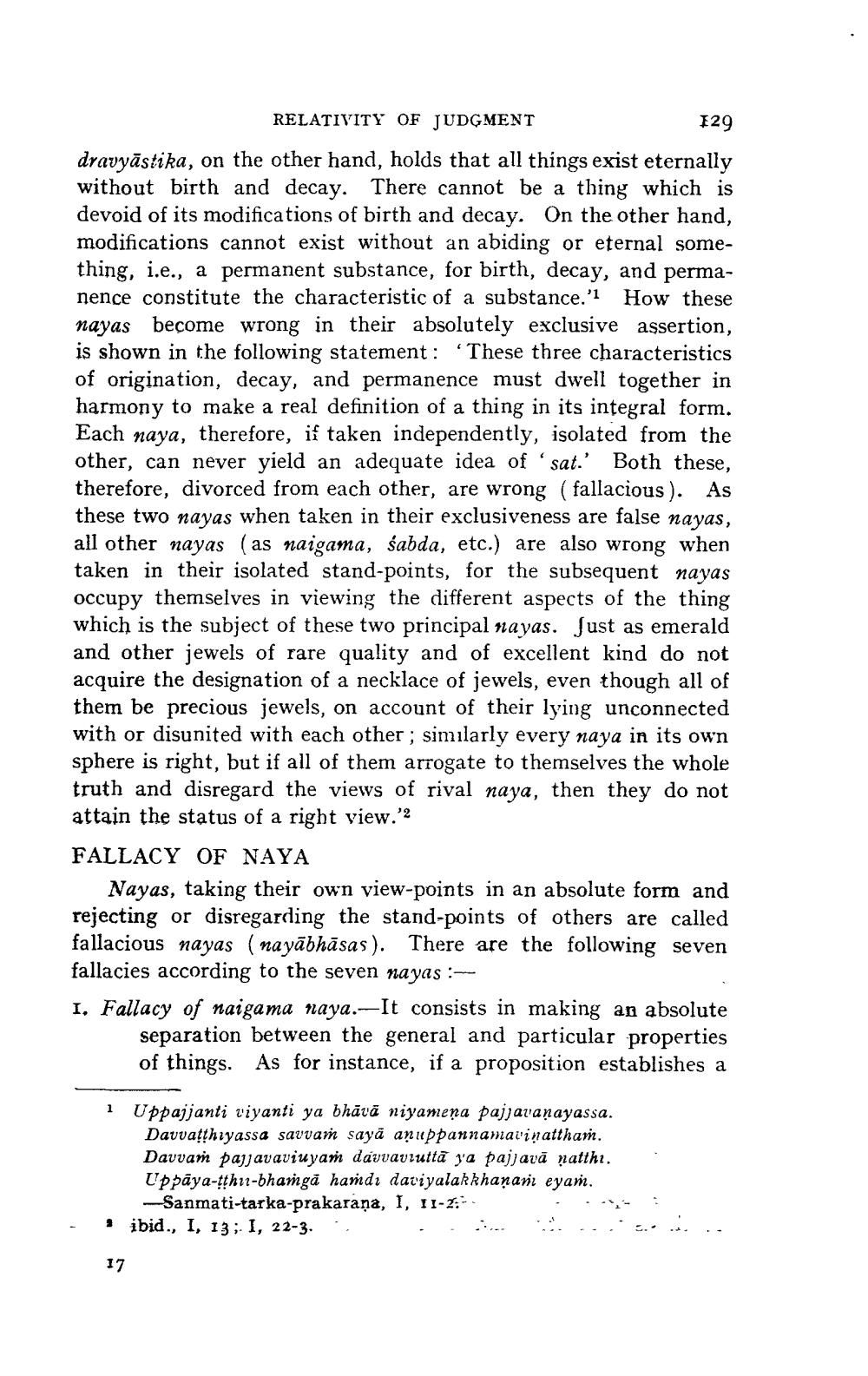________________
RELATIVITY OF JUDGMENT
129 dravyāstika, on the other hand, holds that all things exist eternally without birth and decay. There cannot be a thing which is devoid of its modifications of birth and decay. On the other hand, modifications cannot exist without an abiding or eternal something, i.e., a permanent substance, for birth, decay, and permanence constitute the characteristic of a substance.'1 How these nayas become wrong in their absolutely exclusive assertion, is shown in the following statement: These three characteristics of origination, decay, and permanence must dwell together in harmony to make a real definition of a thing in its integral form. Each naya, therefore, if taken independently, isolated from the other, can never yield an adequate idea of 'sat. Both these, therefore, divorced from each other, are wrong (fallacious). As these two nayas when taken in their exclusiveness are false nayas, all other nayas (as naigama, śabda, etc.) are also wrong when taken in their isolated stand-points, for the subsequent nayas occupy themselves in viewing the different aspects of the thing which is the subject of these two principal nayas. Just as emerald and other jewels of rare quality and of excellent kind do not acquire the designation of a necklace of jewels, even though all of them be precious jewels, on account of their lying unconnected with or disunited with each other, similarly every naya in its own sphere is right, but if all of them arrogate to themselves the whole truth and disregard the views of rival naya, then they do not attain the status of a right view.'2
FALLACY OF NAYA
Nayas, taking their own view-points in an absolute form and rejecting or disregarding the stand-points of others are called fallacious nayas (nayābhāsas). There are the following seven fallacies according to the seven nayas :1. Fallacy of naigama naya.—It consists in making an absolute
separation between the general and particular properties of things. As for instance, if a proposition establishes a
1 Uppajjanti viyanti ya bhāvā niyamena pajjavaņayassa.
Davvatthiyassa savvam sayā aṇuppannamavinattham. Davvam pajjavaviuyam dávvavuuttā j'a pajj avā natthi. Uppāya-tthui-bhamgă hamdı datiyalakkhanavı eyam.
-Sanmati-tarka-prakarana, 1, 11-2: . ibid., I, 13; 1, 22-3.
. .
..
-
......
17




